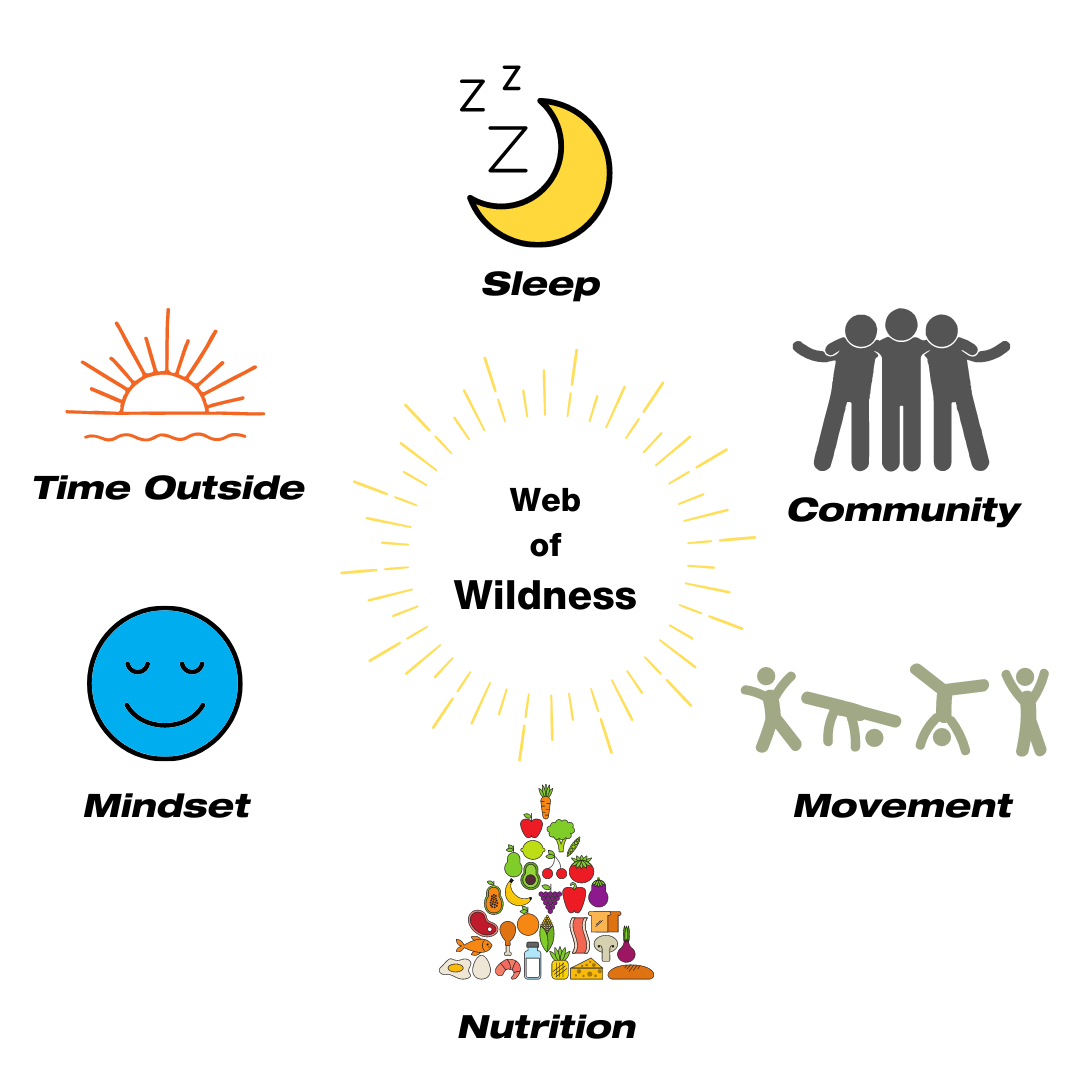Happy Friday, League!
A lot of people like to start new habits on a Monday or the first of the month. I have always been drawn to the seasons and I like to reevaluate my daily habits and lifestyle for each new season. Now that we are into spring, I decided to adopt three new movement principles that go hand-in-hand with living a wild life.
Principle 1: Sitting Penalty
The first one is from the book “Becoming a Supple Leopard.” Author and mobility guru Kelly Starrett suggests instituting a “sitting penalty.” For every 30 minutes you spend sitting, you should get moving and do some mobility work for 4 minutes. I found 4 minutes to an odd time so I increased it to 5 and I try to do most of those breaks outdoors.
I set a 30-minute timer on my watch when I sit down and when the alarm goes off I note if I am feeling anything in my body that needs attention. I often just feel the need to move, so I might do some barefoot walking around our property.
For mobility work, I love runner’s lunge twist to stretch everything that suffers when I sit too much, including hamstrings, hip flexors, back and shoulders. Neck and back stretches like cat-cow are wonderful as well. I often throw in some pocket monkii work and use that time to really focus on proper form and stabilization in moves like deep squats and pistols.
Principle 2: Sit for fewer than 4 hours per day
The second principle I’ve adopted is heavily related to the first. In my last email I reported some statistics about average habits of Americans. One of them was from this study which reported that less than 3% of Americans sit for fewer than 4 hours per day (not including sleep time. That blew my mind and I started to think about how much I actually sit over the course of a day.
For the past several years I have made it a point to get up regularly and do some stretching and moving around especially when I am on the computer a lot for work. But when I started looking more closely, I was still spending more time sitting than anything else. Was I truly benefitting from spending a couple minutes per hour taking a break from sitting? I didn’t really feel like I was and the math agreed. I was only spending about 12 minutes actively moving out of 360 minutes on the computer.
Even though I was conscious of changing my position, I was still most in a seated position for much of the day. I also often gave myself “bonus points” for being outside even though I was still sitting at the patio table. Being outside is great, but sitting outdoors wasn’t treating my body much differently than sitting indoors. But…what the heck I was supposed to do if I wasn’t sitting, especially when I needed to be on the computer? I had to get more creative.
I now am using Stoic for longer periods during the day rather than as an isolated exercise tool. Previously, I was using it for maybe 90 minutes a week. I now consider it as necessary to my work day as my computer and spend at least a couple of hours per day on it, and am working to increase that time. My main goal is to not spend too much time in any one position or place at a time. I’ll sit at the dining room table to work but once that 30 minute timer goes off, I do my 5 minutes of mobility work and then I work while standing on Stoic for the next 30 minutes. Then I might sit on the floor or move outside (once the weather allows). I aim never to spend two 30 minute sessions seated in a row. It’s still hard to get away from the “less than 4 hours seated” statistic when you are doing so much computer work. But there is still plenty of room for improvement!
I highly recommend spending a day or two tracking your sitting time. I used the timer feature on my watch (a phone would work as well) and let it run any time I was sitting. I’d pause it when I got up and then put it to go again when I sat back down. The results were pretty scary and eye-opening and I always considered myself someone who was paying close attention to my sitting time.
Principle 3: Distance Looking
The final practice I have implemented is from our Body Hardening Manual: Distance Looking. Most of us realize that when we spend hours sitting, one of the impacts is that some of our muscles shorten, especially our hamstrings and our hip flexors. Our eyes are no different and they utilize muscles to focus on things closer to, or further from, our faces.
When we spend a lot of time indoors and on a computer, there is very little variation in what our eyes are focusing on. Everything is usually within short distance from our bodies. Along with my sitting penalty, I have adopted an “ocular penalty” and spend 5 minutes per hour focusing on objects at a variety of distances: a tree across the street, an island across the lake, the neighbor’s flagpole. Since I am already outdoors for my sitting penalty it’s easy to combine the 2 practices.
I am still playing around with the details but my eyes definitely appreciate the break and the opportunity to get some “exercise” as well. Plus, I see more bald eagles than ever! The time we spend focusing on a computer also causes us to blink less which can lead to dry eyes and temporarily blurry vision.The Mayo Clinic recommends the 20-20-20 rule which says that for every 20 minutes looking at a screen you should spend 20 seconds looking at something at least 20 feet away.
After a week of putting these 3 practices in place, I am already feeling the benefits. I don’t feel stiff anymore when getting off the chair because I am not losing track of time and sitting for 2 hours straight. I am more mindful of my form within everyday movements which has helped me to realize how I’ve allowed bad habits to creep in. I’m pretty surprised at how fast I’ve seen changes and am stoked to see what else I learn by summer!
It's time for me to get off this chair. Make it a wild weekend!
-Kim


Leave a comment
This site is protected by hCaptcha and the hCaptcha Privacy Policy and Terms of Service apply.